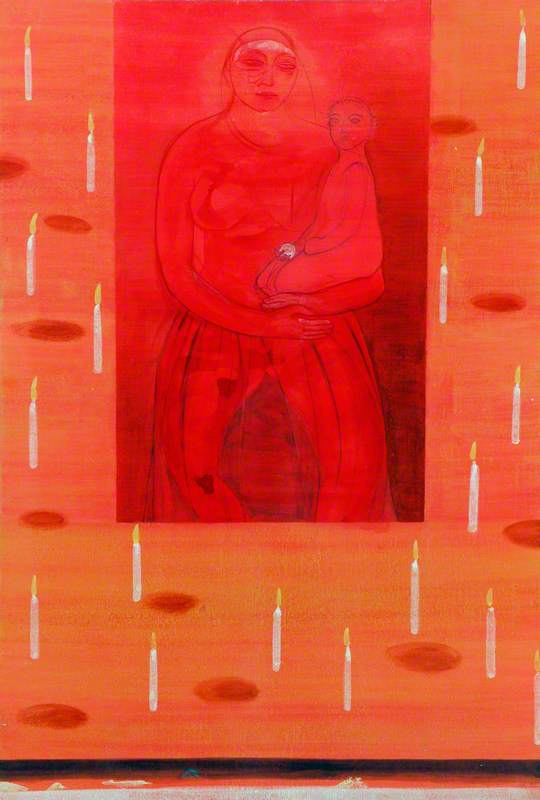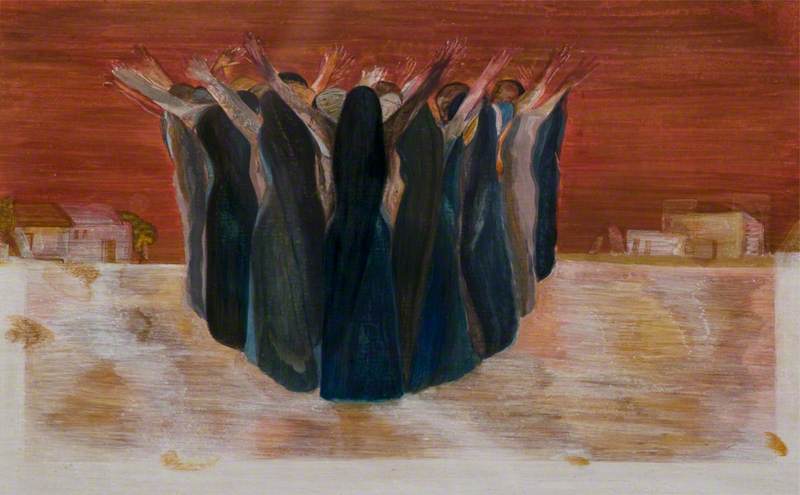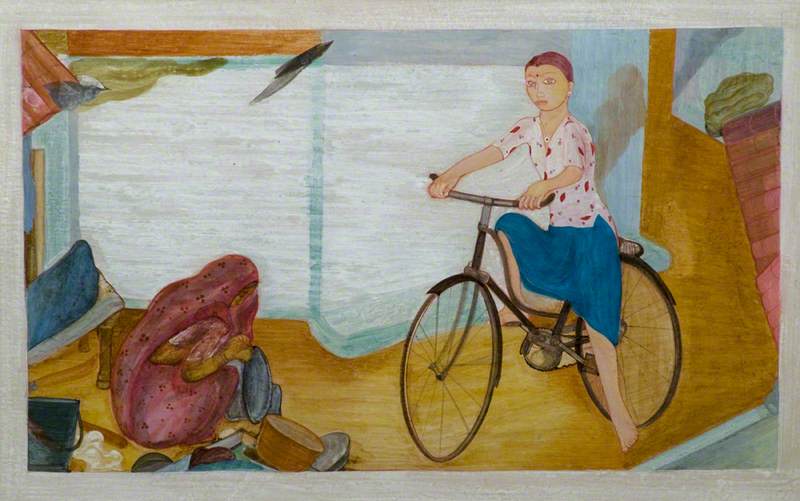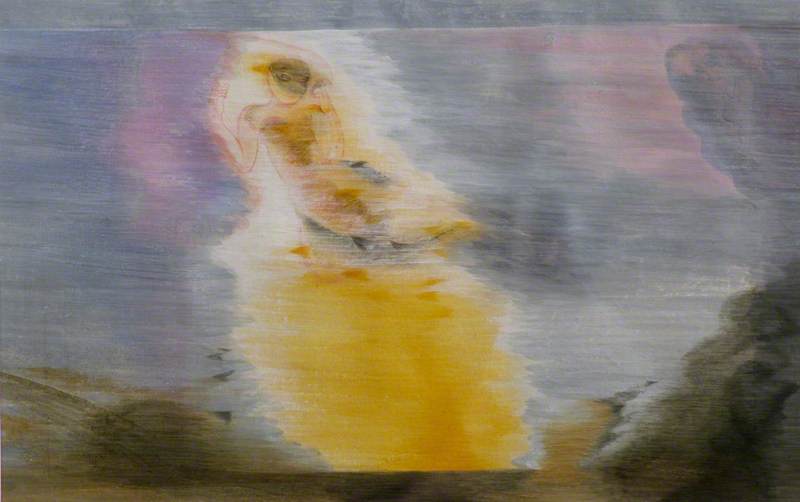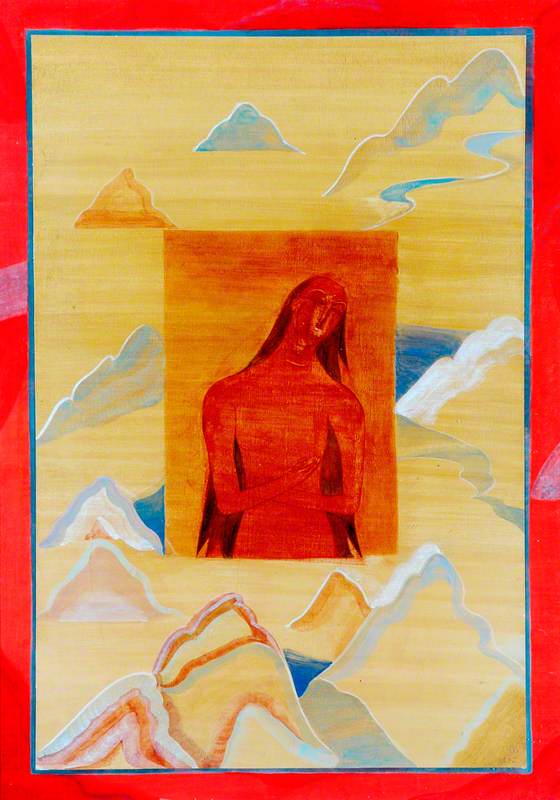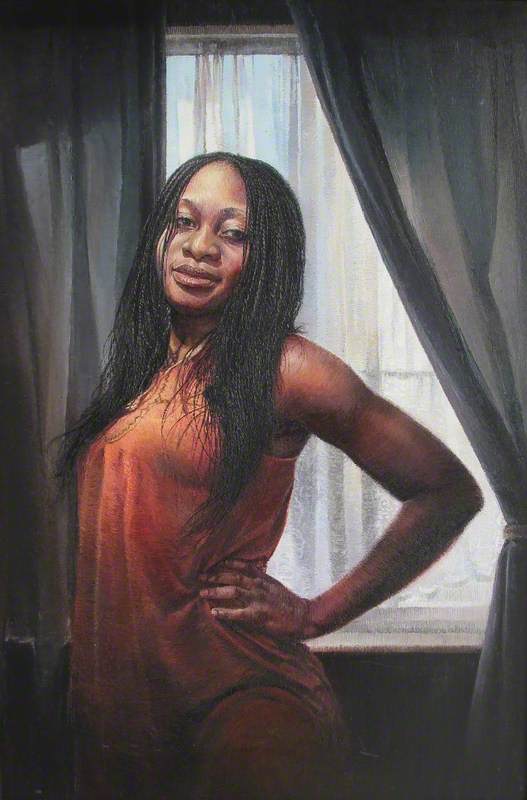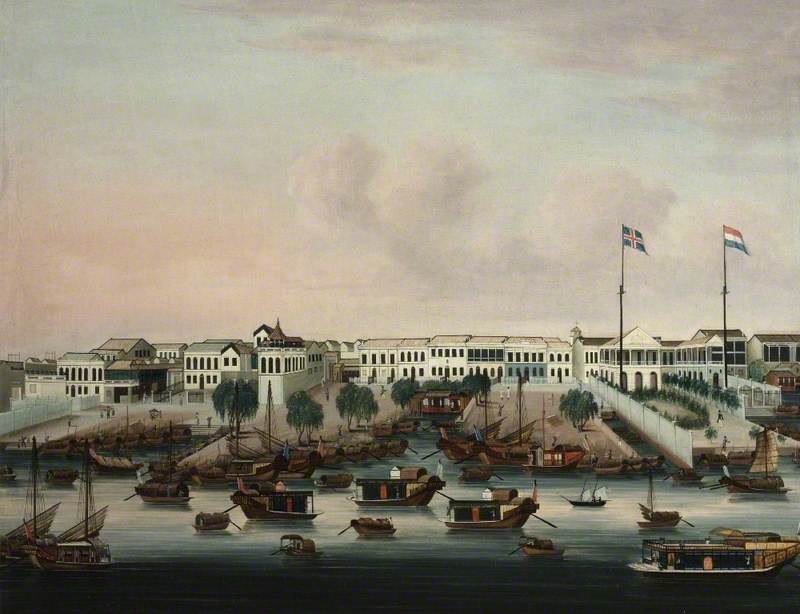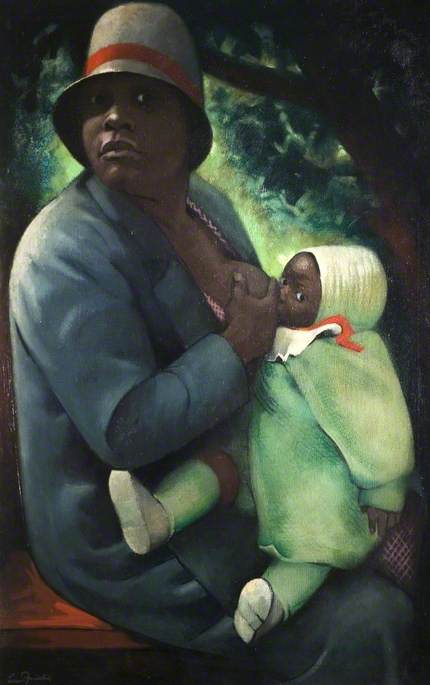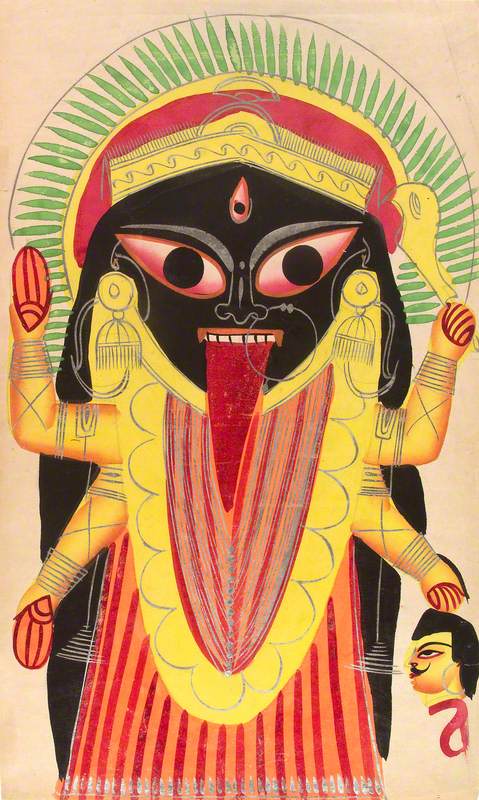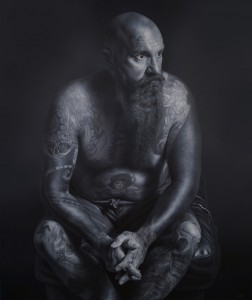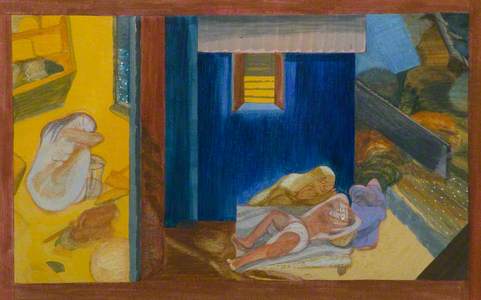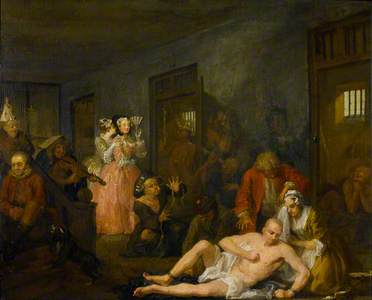Nilima Sheikh (b.1945) is an Indian-born and based painter who creates bold, colourful, figurative works. Her later works are so bright that it wouldn't be surprising if the paint started bleeding off the wall as we looked at them.
If the name Nilima Sheikh isn't familiar to most it's because, despite painting since the 1970s, her work has been mainly shown in her native India – her only solo exhibition in a major western institution being in the Art Institute of Chicago in 2014.
Her works may be found in the UK, at both the New Walk Museum & Art Gallery in Leicester and at Bradford Museum and Galleries – Leicester and Bradford are two cities that have strong communities that can trace their heritage back to the Indian sub-continent.
The works in Leicester are a series that tell the tragic story of a young woman named Champa who is murdered for her dowry by her husband's family. It's a darker side to the colourful celebrations and amazing food associated with Indian weddings.
Marriage and Departure to the In-Laws' Village
1984–1985
Nilima Sheikh (b.1945) 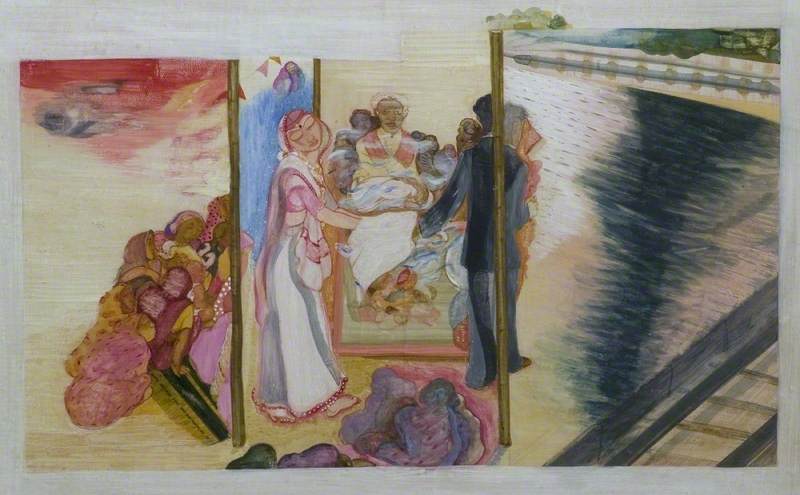
While the story told through the series of paintings is thankfully becoming less common today, the early elements of the story will be recognisable to those of Indian heritage, both here in the UK as well as on the sub-continent. Particularly where the in-laws meet and inspect the new bride – a key part of an arranged marriage, it's often said in Asian communities that a marriage is not one of two individuals but of two families.
It's after the marriage that the series takes a darker turn as tension builds. The husband, mother-in-law and sister-in-law plot to, and then successfully, kill Champa.
Conflict between the Daughter-in-Law and Mother-in-Law, while the Husband Enjoys a Rest
1984–1985
Nilima Sheikh (b.1945) 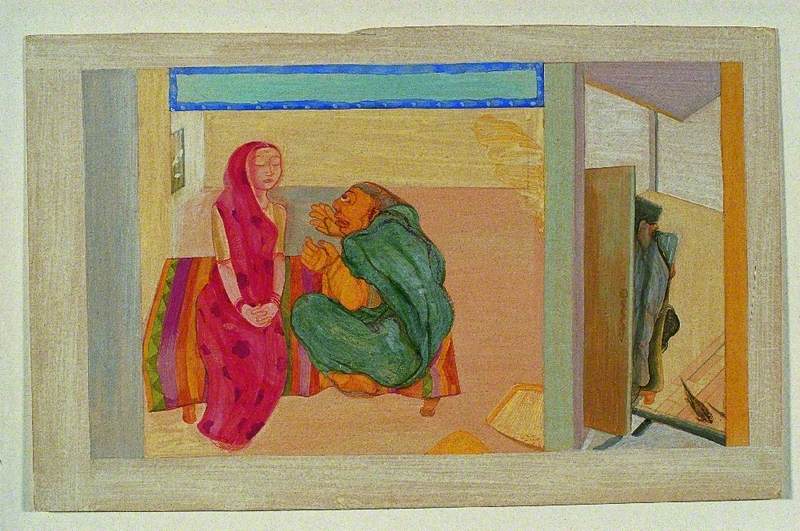
This tragic end showcases the darker side of arranged marriages, where a new bride is sometimes subjugated by her new family who still treat her as an outsider. It also highlights the inequality that often exists between male and female roles – typified by a scene where the mother-in-law is telling off her new daughter-in-law while the man has a rest. He's in the perfect position to mediate between his mother and his wife but has decided to 'let the women sort it out' while he does nothing.
A life narrative told through paintings will undoubtedly draw a comparison to William Hogarth's series 'A Rake's Progress' and 'A Harlot's Progress'. While Hogarth's characters are almost as deplorable as the society that corrupts them, Champa is a more sympathetic character. Unlike Hogarth's moralistic tales, the story told by Sheikh is more personal and sadder, with the poor Champa eliciting much sympathy.
Sheikh's works with their large blocks of colour appear on screen as if they could be quite large, but in person they are much smaller than expected, at only 35 cm across. This reflects that while Sheikh was trained in the Western style of oil painting, she also taught herself to emulate the miniature style associated with Mughal court painting. It's this blend of Eastern and Western styles that makes her work stand out within the Art UK collection.
Tensions in the Household and Persecution of the New Bride
1984–1985
Nilima Sheikh (b.1945) 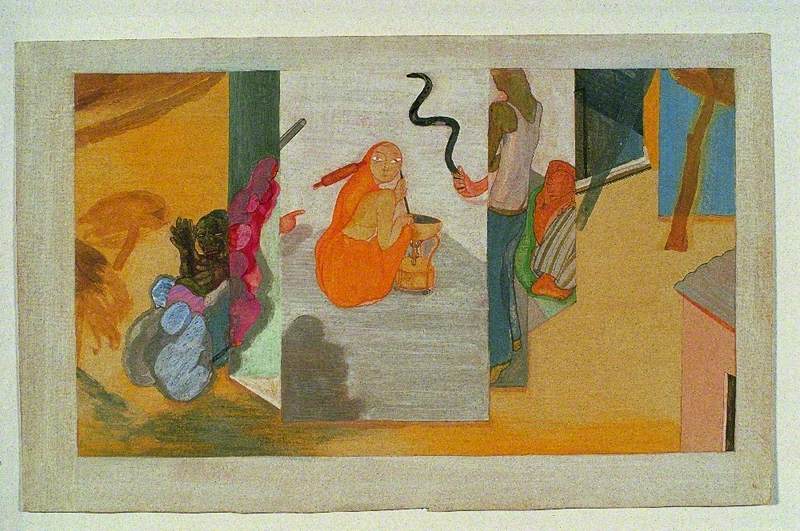
There has been a recent redress to bring more female non-Western artists to light, given that art history has largely been white and male to this date. With this trend in mind, it's the perfect time to highlight an established painter like Nilima Sheikh, who many of us will not have heard of.
Tabish Khan, art critic and visual arts editor
Find Tabish on Twitter and Instagram: @LondonArtCritic
www.tabish-khan.com
